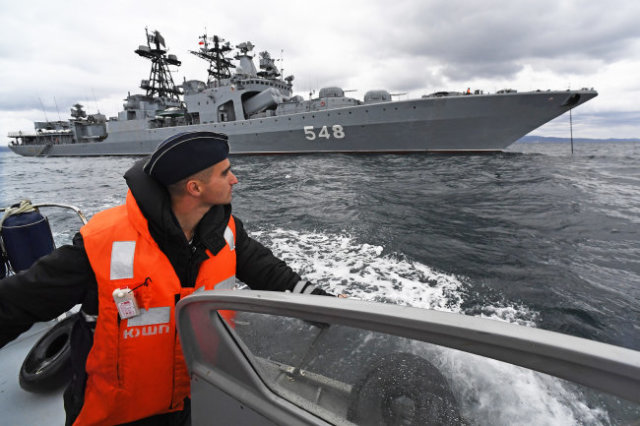On Thursday, October 14, the joint Russian-Chinese naval exercises "Maritime Interaction-2021" officially started in the Sea of Japan.
"In the course of practical actions, the crews of the ships of the two countries will work out joint tactical maneuvering, mine protection of detachments, conduct artillery firing at sea targets, search and block a submarine of a conditional enemy in the designated area," the headquarters of the Pacific Fleet of the Russian Federation reported.
Considerable forces have been allocated to solve these problems. From Russia, the exercises will involve the large anti-submarine ship Admiral Panteleev, the corvettes Aldar Tsydenzhapov and Loud, two base minesweepers, the submarine Ust-Bolsheretsk, as well as a missile boat and a rescue tug.
The Chinese sent the destroyers "Kun Ming" and "Nan Chang", corvettes "Bin Zhou" and "Liu Zhou", as well as a diesel submarine, an integrated supply ship and a rescue vessel to Peter the Great Bay, from where the joint group will go to the exercise area.
It is known that 12 aircraft and helicopters of the naval aviation of the Pacific Fleet of Russia and the Navy of the People's Liberation Army of China will provide for the actions of the ships from the air. Such air support is provided in the scenario of almost every "Maritime Interaction" exercise.
The fact is that Russia and China conduct joint naval maneuvers on a regular basis. If we talk about "Maritime interaction", the admirals organized these exercises for the first time back in 2012. Since then, our and Chinese ships have operated together in the Yellow, South China and East China Seas and even in the Mediterranean. In 2020, however, there were no such maneuvers - because of the coronavirus pandemic, they decided not to conduct exercises. Now the sailors will go to the Sea of Japan.
Moscow and Beijing never tire of repeating that the maneuvers are not directed against any country or countries. They pursue a very specific goal - to strengthen practical cooperation between the Russian and Chinese military fleets and prepare them to jointly confront various threats at sea.
Yuri Gavrilov

